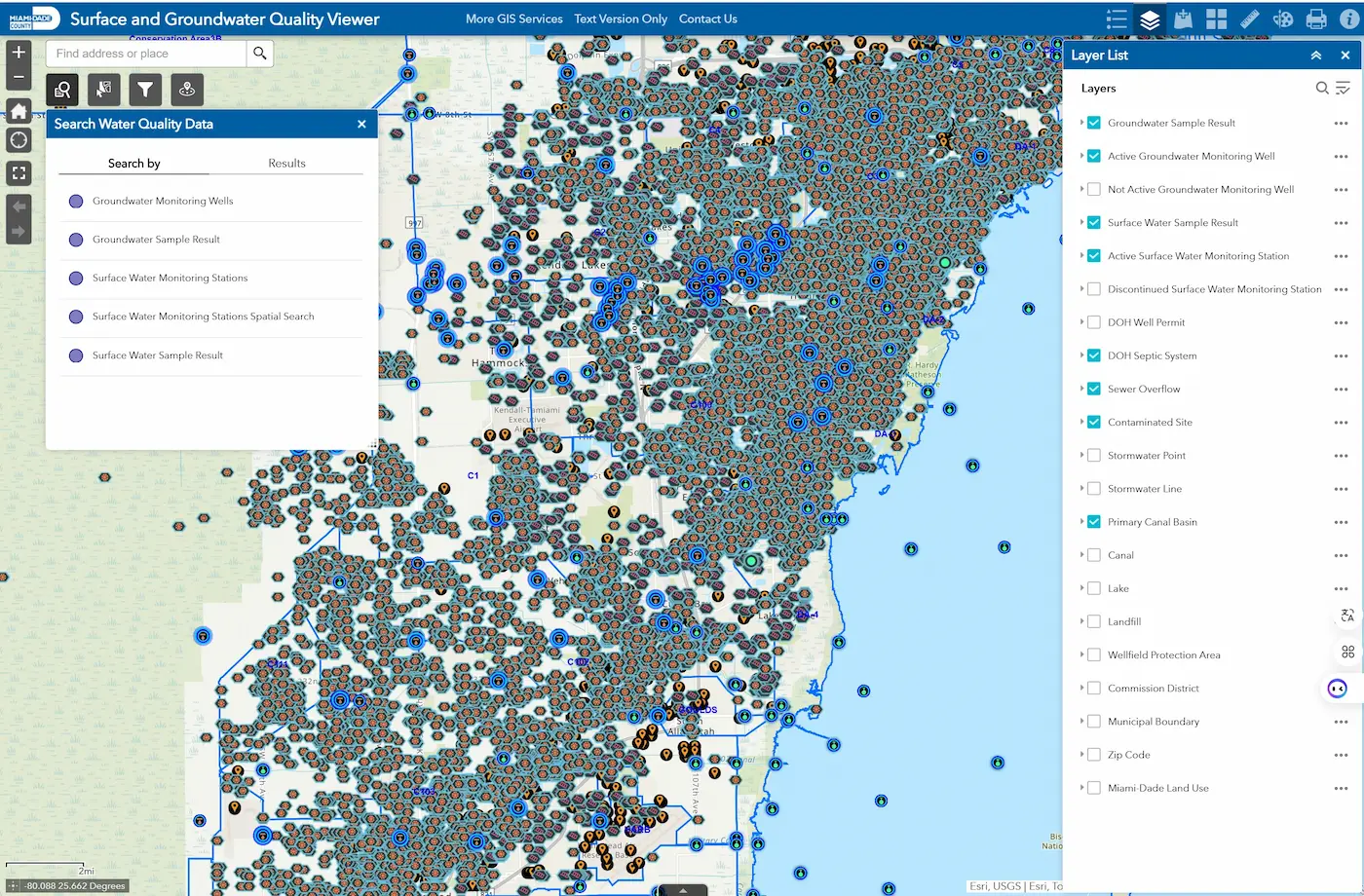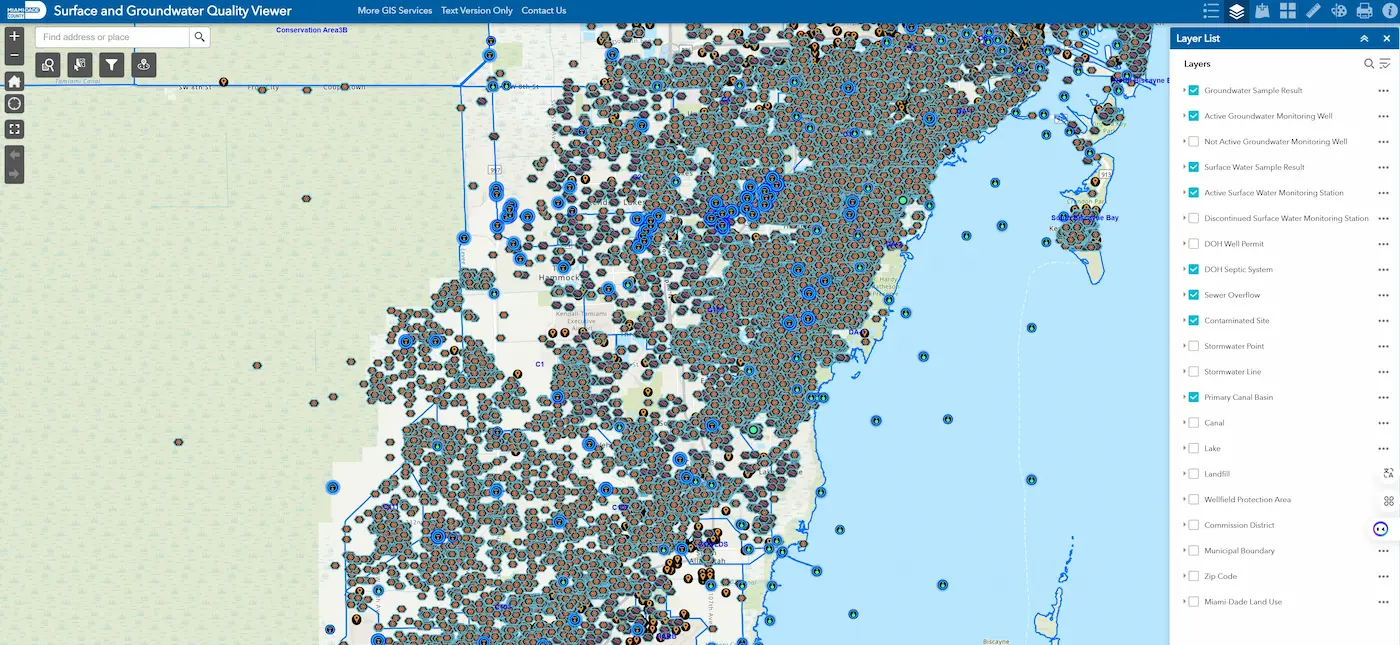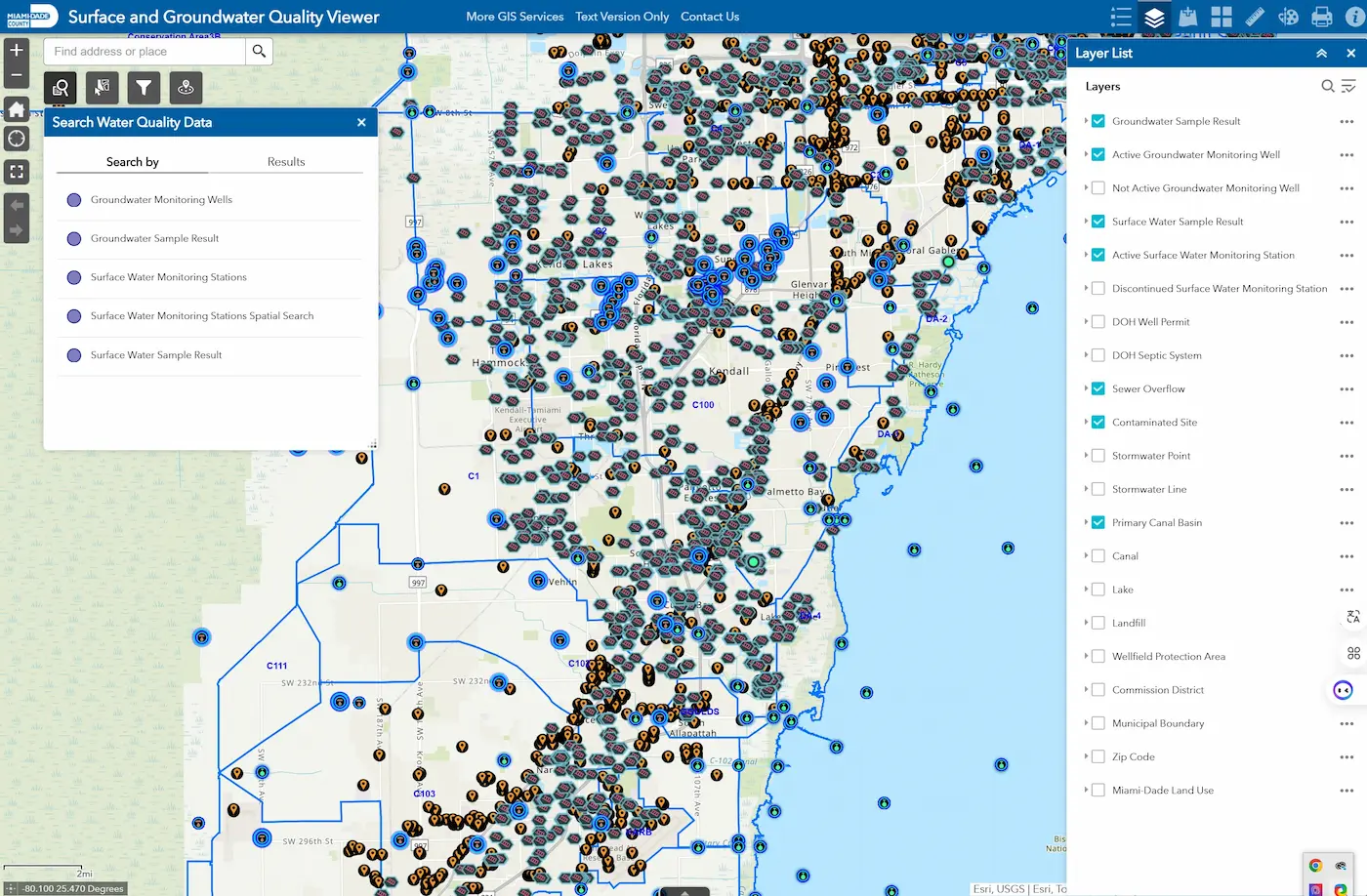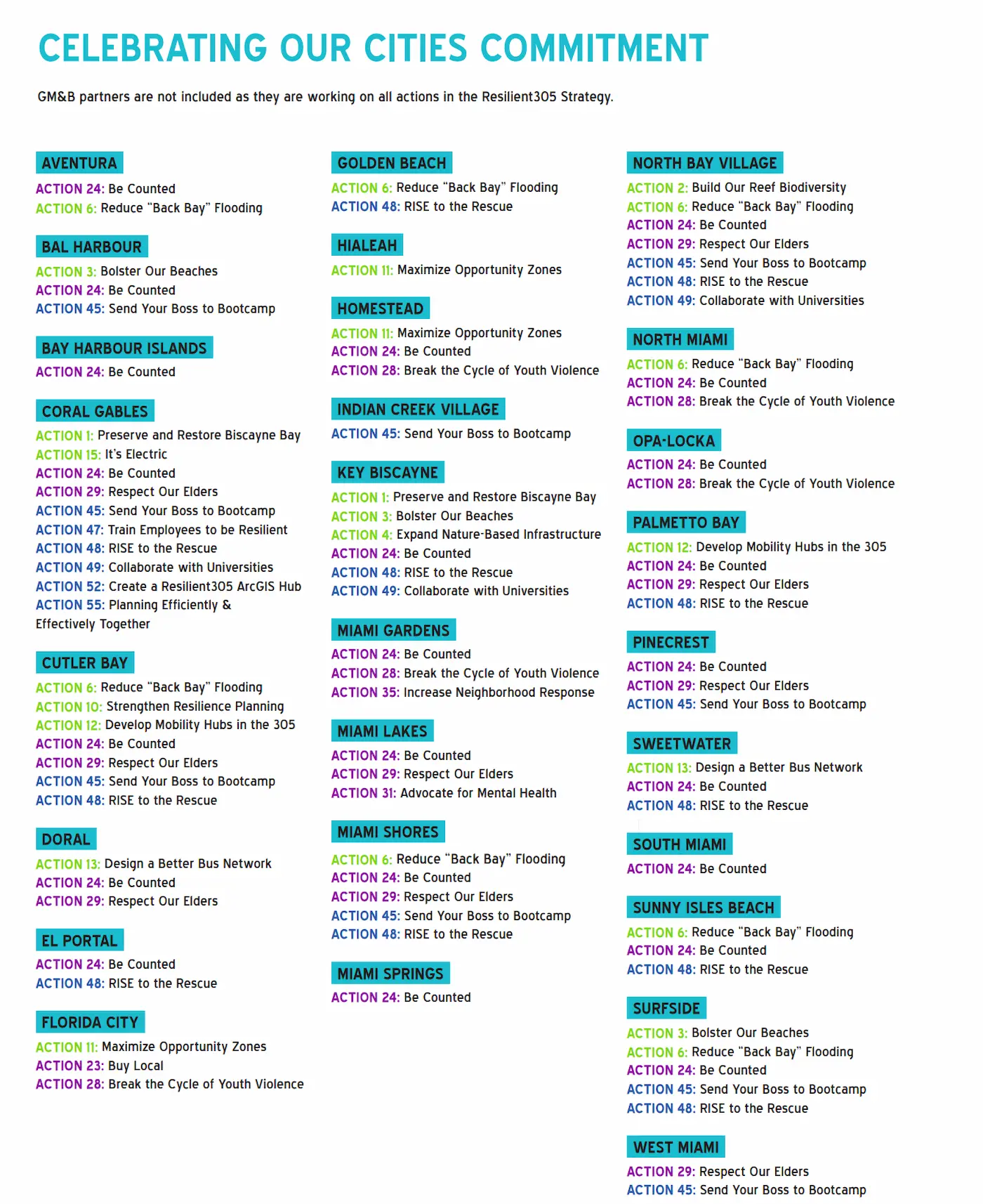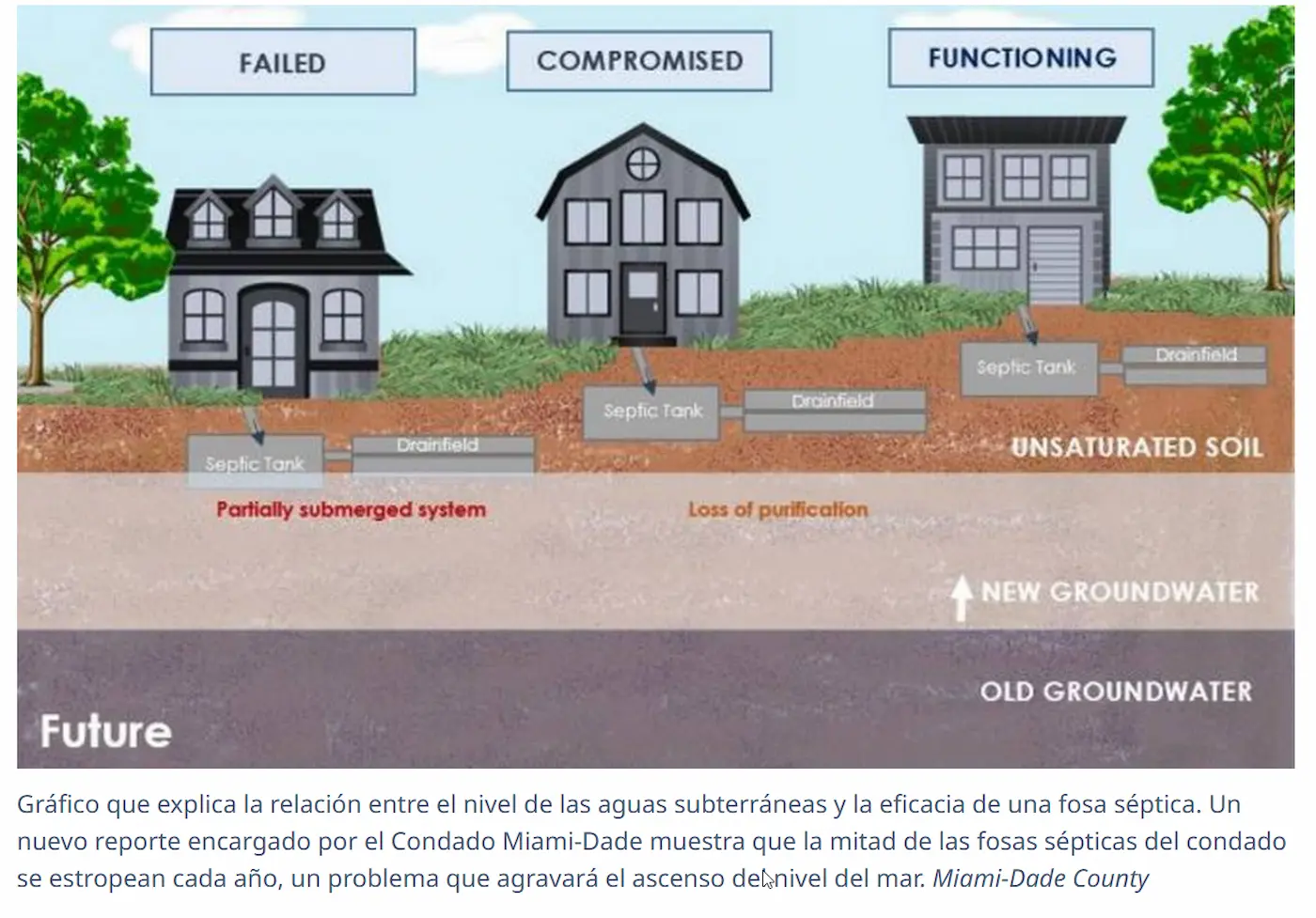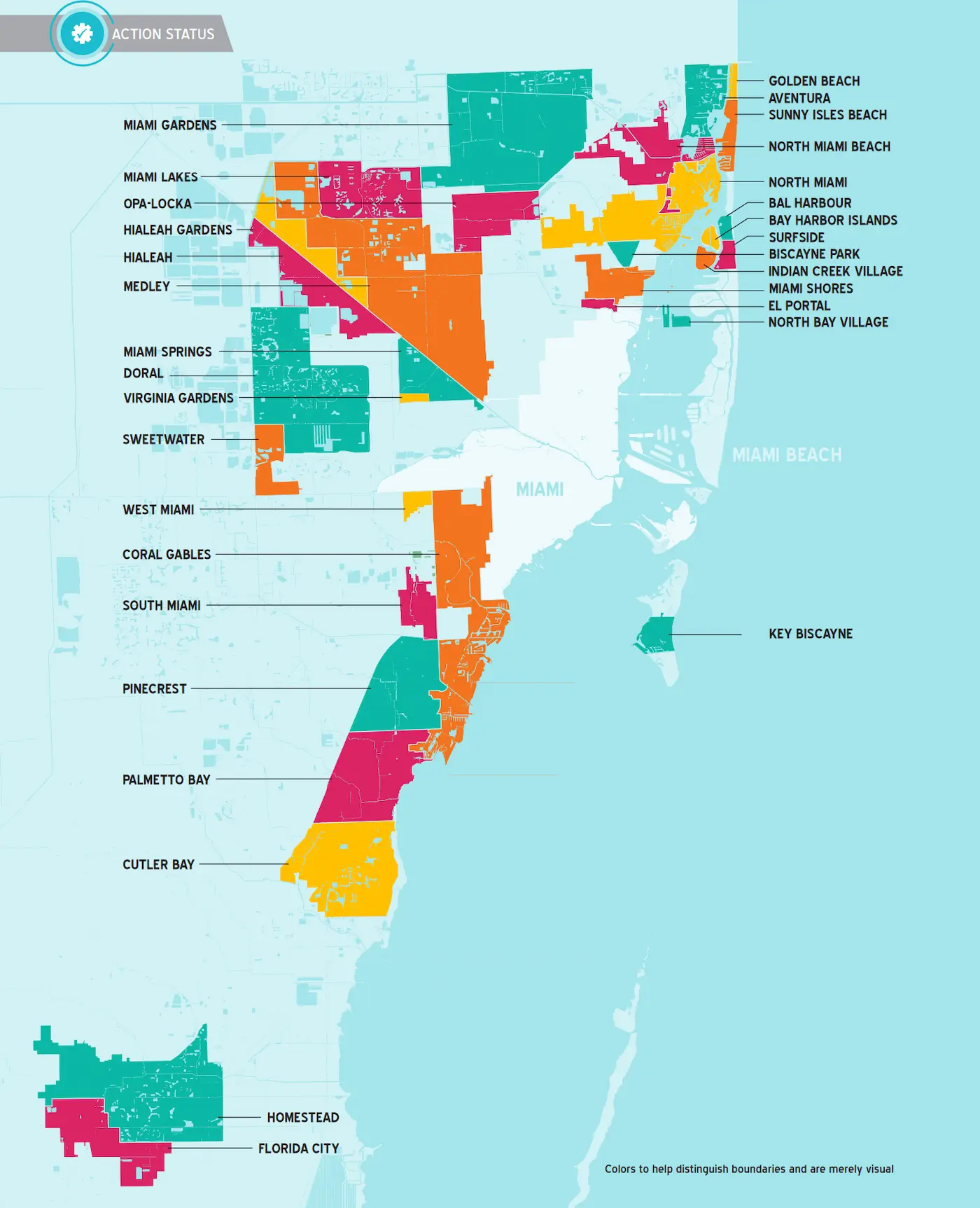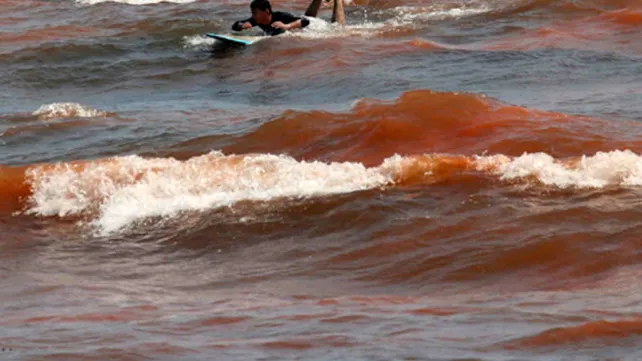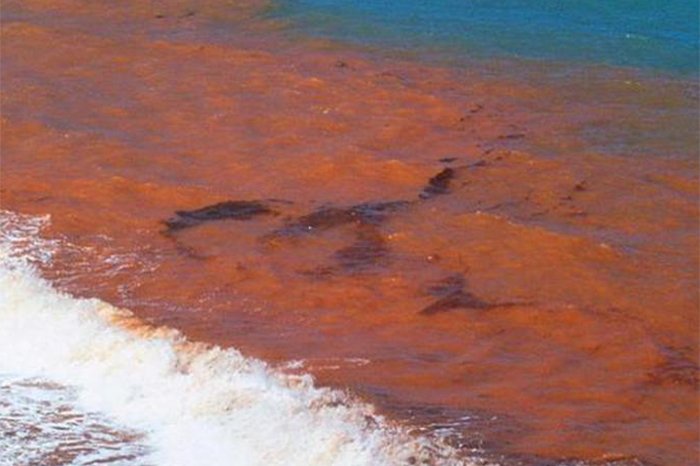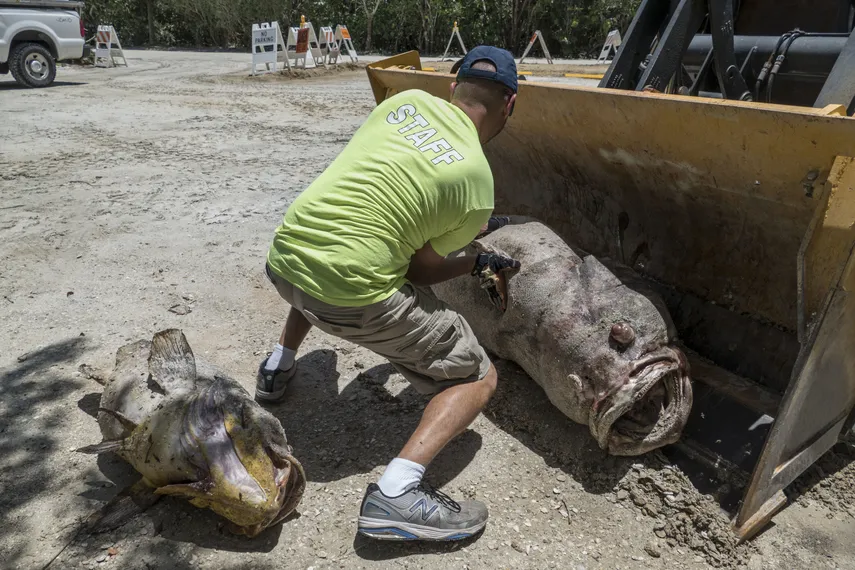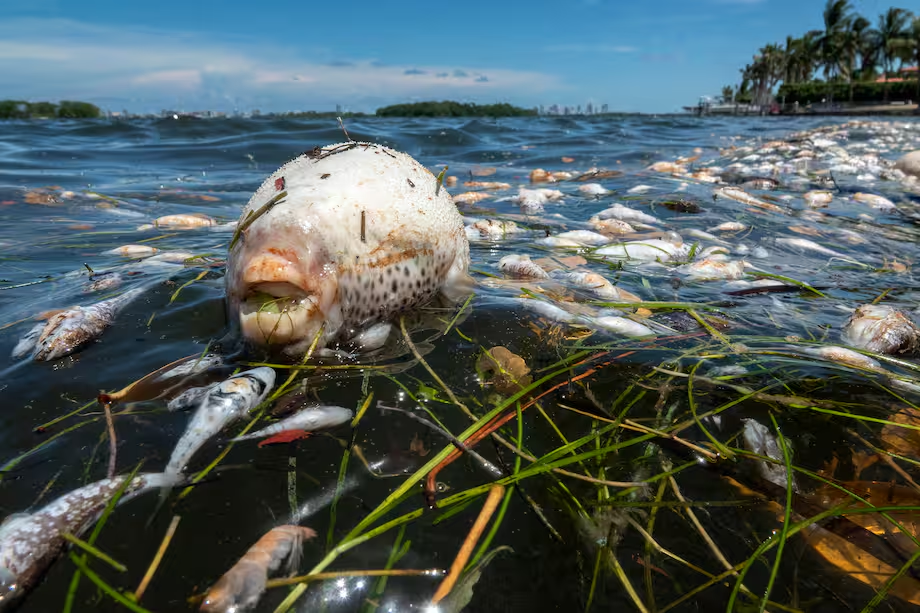|
Getting your Trinity Audio player ready... |
Tabla de Contenido/ Table of Contents
- 1 Daniella Levine Cava names Loren Parra as Miami-Dade’s Chief Resilience Officer Following Controversy with Former Nominee
- 2 Loren Parra: An Environmental and Political Leader
- 3 Immediate Challenges
- 4 What Tools Does Parra Have?
- 4.1 What is Resilient305?
- 4.2 Key Resilience Initiatives in Miami-Dade
- 4.3 Climate Change & Natural Threats
- 4.4 Limited Funding & Resources
- 4.5 Social Inequity & Community Vulnerability
- 4.6 Intergovernmental Coordination & Bureaucracy
- 4.7 Urban Development Pressures
- 4.8 Public Awareness & Community Engagement
- 4.9 Technology & Data Limitations
- 4.10 Long-Term Governance Challenges
- 4.11 Concrete Example: Stormwater Drainage System in Downtown Miami
- 4.12 Lack of Public Sewer Systems & Groundwater Contamination
- 4.13 Red Tide (Karenia brevis) and Its Recurring Impact
- 4.14 Ecological and Economic Consequences
- 4.15 Pollution of the Eastern (Biscayne Bay) and Western (Everglades) Coasts
- 4.16 Impact on Biodiversity
- 4.17 Mitigation Challenges
- 4.18 Case Study: Biscayne Bay Crisis (2020)
- 4.19 Final Outlook:
Daniella Levine Cava names Loren Parra as Miami-Dade’s Chief Resilience Officer Following Controversy with Former Nominee
Miami-Dade County Mayor Daniella Levine Cava announced this Friday a key change in her cabinet: environmentalist Loren Parra will assume the role of Chief Resilience Officer (CRO) for the county, a strategic position to tackle climate challenges in one of the most vulnerable regions of the United States. The decision comes after the forced resignation of her initial pick, Curtis Osceola, who was linked to a domestic violence case that was ultimately dismissed by the prosecution.
Context: The Controversy with Curtis Osceola

Levine Cava had initially appointed Osceola, former chief of staff for the Miccosukee Tribe, to the position in June. However, days before he was set to take office, Osceola was arrested on charges of assaulting his fiancée and resisting arrest without violence. According to the police report obtained by the Miami Herald, officers observed “signs of an altercation” in the couple’s apartment, though both had minor injuries.
Osceola’s attorney defended his innocence, claiming security footage would exonerate him. The mayor postponed his appointment “while the legal process was resolved.” Finally, prosecutors dropped all charges on the same Friday that Parra’s appointment was announced.

Loren Parra: An Environmental and Political Leader

Loren Parra
New Position: County Resilience Director (CRO)
Previous Position: Chief of Water and Bay Resources (within the Resilience Office).
Experience:
Senior Communications Director for the Mayor since 2022.
Managed initiatives such as Thrive305 and the Biscayne Bay specialty license plate program.
Worked with former Senator Bill Nelson and at the Everglades Foundation.
Education: MBA and Bachelor of Arts in Political Science and Sustainable Studies (University of Florida).
Parra, who describes herself as an “extroverted environmentalist,” is not new to the county. Since 2022, she has served as the Head of Water Resources and Biscayne Bay.
As part of the restructuring, the positions of Chief Resilience Officer, Bay Director, and Heat Director will be merged into a single role, while specialized resilience staff will be integrated directly into key departments. This new structure aims to optimize taxpayer resources, ensuring maximum efficiency in the implementation of priority resilience and risk mitigation initiatives across the county. This effort is part of the WISE305 program, launched by Mayor Levine Cava to enhance government efficiency, as announced in her State of the County address this year.
In her recent role, she lobbied at the state and federal level to reactivate Biscayne Bay restoration projects, promote Everglades restoration, reduce flooding, and improve water quality.
Restructuring and Fiscal Austerity
The mayor justified the change as part of an internal reorganization aimed at optimizing resources during a budget adjustment year. The Office of Environmental Risk and Resilience (OERRE) will now integrate climate projects across all county departments, with the goal of “reducing costs and risks for residents.”
Salaries:
- Parra earned $171,770 annually as Head of Water Resources.
- Her interim predecessor, Patricia Gómez, earned $214,173.
Key Statements
Daniella Levine Cava:
“This new structure will empower our resilience experts to work directly on critical projects, better protecting our community in the short and long term.”
Immediate Challenges
Parra inherits a county on the front lines of the climate crisis:
- Sea Level Rise: 3 mm per year over the past decade.
- Record Temperatures: 2023 was the hottest year on record in Florida.
- Critical Infrastructure:
- Drainage improvements
- Hurricane preparedness
- Mitigation of sunny-day flooding and gradual building subsidence
In a shift marked by controversy and climate urgency, Levine Cava is betting on a young but experienced leader to navigate turbulent waters. Parra, in turn, must prove that her multidisciplinary approach can translate into concrete actions for a more resilient Miami-Dade.
What Tools Does Parra Have?
What is Resilient305?
Resilient305 is a resilience strategy designed to address global challenges and trends affecting Greater Miami & the Beaches (GM&B)—a collaboration between Miami-Dade County, the City of Miami, and the City of Miami Beach.
Key Resilience Initiatives in Miami-Dade
🌊 Flood Mitigation & Sea Level Rise Adaptation
- Protecting coastal communities from flooding and storm surges.
- Improving stormwater management systems to prevent flooding.
🔥 Heat Resilience & Public Health
- Educating residents on heat-related illnesses and prevention strategies.
- Developing cooling solutions in public spaces.
🌿 Ecosystem & Natural Resource Protection
- Restoring Biscayne Bay and coastal mangroves to protect biodiversity.
- Partnering with organizations to preserve live coral reefs.
🏗 Sustainable Infrastructure & Energy Efficiency
- Building Efficiency 305: A strategy to improve energy and water efficiency in public and private buildings.
- Monitoring and reducing greenhouse gas emissions to combat climate change.
- Implementing sustainable designs in construction through the Sustainable Buildings Program.
📉 Climate Action & Net Zero Goals
- 50% reduction in greenhouse gas emissions by 2030.
- Achieve net-zero emissions by 2050 through renewable energy and technological innovation.
🌪 Disaster Risk Management & Community Preparedness
- Supporting the U.S. Army Corps of Engineers’ Coastal Risk Management Plan.
- Strengthening emergency response and community preparedness to protect residents from extreme weather events.
Through intergovernmental and community collaboration, Resilient305 engages residents, business leaders, academics, and local organizations to develop innovative solutions that anticipate, adapt to, and recover from extreme events like hurricanes, infrastructure failures, economic crises, and other urban challenges.
The program emerged as part of the 100 Resilient Cities initiative, spearheaded by the Rockefeller Foundation, and aims to optimize resources, foster leadership, and bridge equity gaps to build a stronger and more sustainable community.
In the long run, Resilient305 plans to expand to the remaining 32 municipalities in Miami-Dade County and continue incorporating key institutions to ensure a viable future for all Miami-Dade residents.




Loren Parra, as Chief Resilience Officer of Miami-Dade, would face complex and interconnected challenges in her role of preparing the city for climate, socioeconomic, and environmental crises. Below are the main difficulties:
Climate Change & Natural Threats
Accelerated Sea Level Rise: Miami is one of the most vulnerable cities in the world due to its flat geography and porous limestone foundation, which facilitates water infiltration.
Intense & Frequent Hurricanes: The hurricane season is becoming more unpredictable, with extreme events like Hurricane Ian (2022) requiring rapid response and reconstruction plans.
Recurrent Flooding: Sunny-day flooding (not associated with rainfall) already affects neighborhoods like Miami Beach, requiring expensive infrastructure investments such as water pumps and elevated streets.
Limited Funding & Resources
High Costs of Resilience Projects: Initiatives like the Stormwater Master Plan require over $4 billion, but the current budget is insufficient.
Dependence on Federal & State Funds: The availability of resources varies based on political priorities, especially in Florida, where the state government has shown skepticism toward climate policies.
Social Inequity & Community Vulnerability
Lack of Protection for Marginalized Communities: Neighborhoods like Little Haiti and Liberty City, with high poverty rates, lack the infrastructure to withstand flooding and extreme heat.
“Climate Gentrification”: Resilience projects in high-income coastal areas (e.g., Coconut Grove) could displace low-income residents, generating social conflicts.
Intergovernmental Coordination & Bureaucracy
Administrative Fragmentation: Miami-Dade consists of 34 municipalities, each with its own regulations, making it difficult to implement unified resilience strategies.
Urban Development Pressures
Real Estate Interests vs. Sustainability: Construction in high-risk zones (e.g., Edgewater, Brickell) continues despite warnings, increasing disaster exposure.
Resistance to Stricter Building Codes: Developers oppose adopting higher elevation standards and sustainable construction requirements due to higher costs.
Public Awareness & Community Engagement
Lack of Climate Education: Many residents underestimate climate risks or prioritize short-term solutions.
Distrust in Authorities: Historically marginalized communities may reject resilience projects if they are not included in decision-making.
Technology & Data Limitations
Limited Predictive Models: The lack of hyperlocal data (e.g., storm surge impact on specific neighborhoods) hinders planning efforts.
Cybersecurity Risks in Critical Infrastructure: Systems controlling flood management and energy are vulnerable to cyberattacks.
Long-Term Governance Challenges
Political Cycles vs. Climate Timeframes: Resilience plans require decades, but elected officials prioritize short-term results (4-8 years).
Project Continuity: Administrative transitions can halt previously initiated resilience projects.
Concrete Example: Stormwater Drainage System in Downtown Miami
A project to modernize drainage in Downtown Miami could face:
- Neighborhood protests due to street closures during construction.
- Cost overruns from discovering outdated infrastructure during excavation.
- Delays due to permitting issues between county and state agencies.
Lack of Public Sewer Systems & Groundwater Contamination
Obsolete or Nonexistent Infrastructure: In unincorporated Miami-Dade and rural communities, many residents rely on septic tanks, which overflow during floods, leaking untreated wastewater into the groundwater.
Aquifer & Coastal Pollution: Nitrogen, phosphorus, and bacteria (E. coli) seep into the ocean through porous limestone, contaminating beaches and coral reefs.
- Example: In 2020, Biscayne Bay beaches were closed due to dangerous levels of fecal bacteria.
Eutrophication & Ecosystem Collapse: Sewage nutrients stimulate harmful algal blooms like red tide, which depletes oxygen, killing fish, corals, and seagrass.
For more information, refer to Surface and Groundwater Quality Viewer. The first image shows the cities in the county that rely on septic tanks. As evidenced by the saturated map, the areas marked in blue represent the most vulnerable regions, exposing an infrastructure crisis that cannot be ignored.
Aquifer and Coastal Pollution: Nitrogen, phosphorus, and bacteria (such as E. coli) seep into the ocean through porous limestone, contaminating beaches and coral reefs.
Example: In 2020, Biscayne Bay beaches were closed due to dangerous levels of fecal bacteria.
For more information, refer to the Florida Healthy Beaches Program
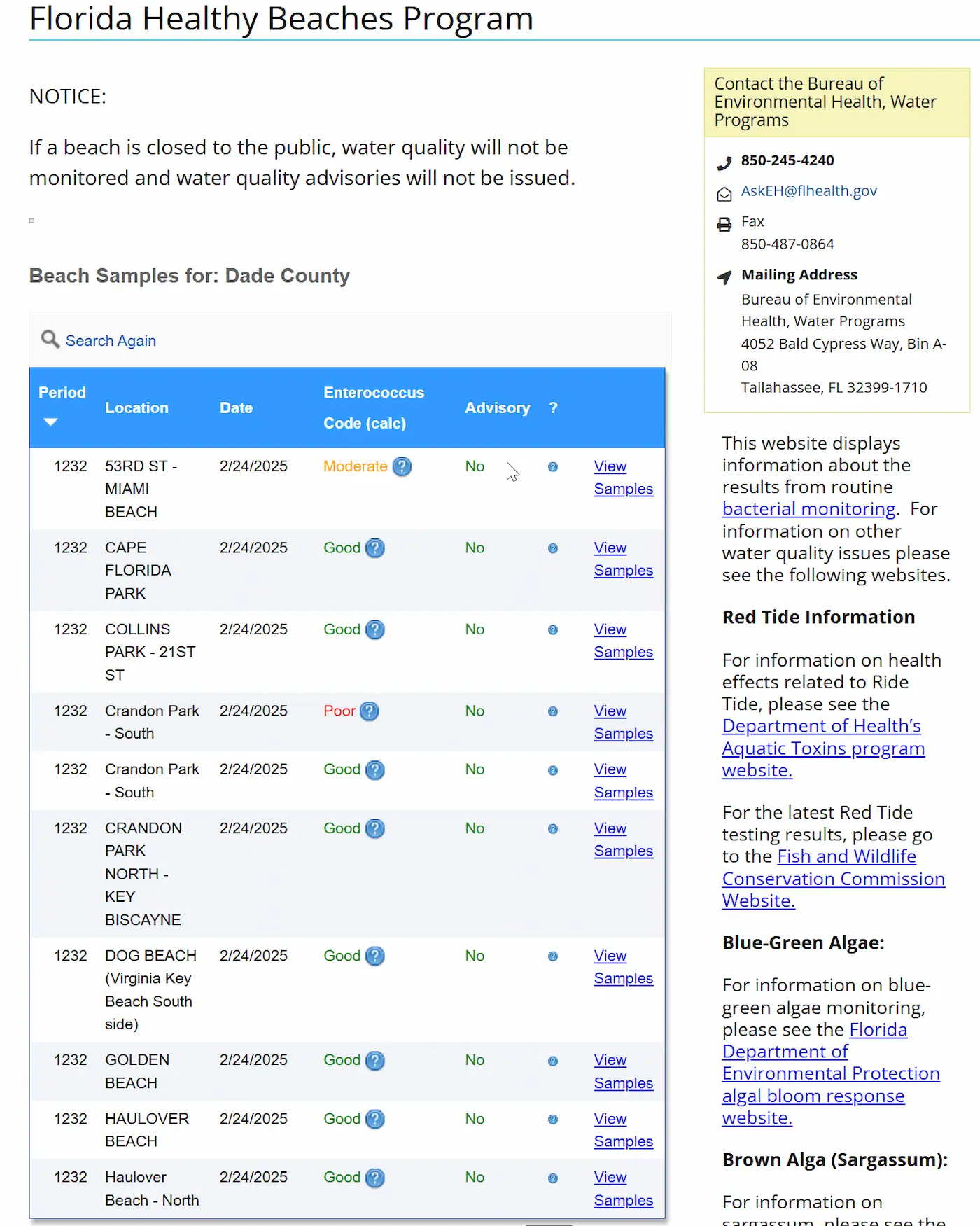

Eutrophication and Ecosystem Collapse: Wastewater nutrients stimulate the growth of toxic algae, such as red tide, which depletes oxygen in the water, killing fish, corals, and seagrass.
Red Tide (Karenia brevis) and Its Recurring Impact
Origin and Human Exacerbation: Although a natural phenomenon, red tide intensifies due to agricultural fertilizer runoff (from areas like the Everglades Agricultural Region) and wastewater discharges, which supply nutrients to the ocean.
Ecological and Economic Consequences
- Massive Wildlife Die-Offs: Between 2017-2019, red tide killed manatees, dolphins, turtles, and thousands of fish, whose carcasses washed up on beaches like those in Fort Lauderdale.
- Tourism Impact: Closed beaches and the stench of decaying marine life negatively impact the tourism industry, which is crucial to the local economy.
- Public Health Risks: Red tide toxins cause respiratory issues in humans and seafood poisoning.
Pollution of the Eastern (Biscayne Bay) and Western (Everglades) Coasts
Biscayne Bay:
- Plastic and Chemical Pollution: Urban waste, pesticides (such as glyphosate), and heavy metals from the shipping industry accumulate in the bay.
- Coral Bleaching: The coral reefs of Biscayne (part of the National Marine Sanctuary) are declining due to pollution, acidification, and rising temperatures.
Everglades:
- Agricultural Pollution: Water contaminated with phosphorus and mercury from sugarcane plantations and livestock farming flows into the Everglades, disrupting the ecosystem. This affects endemic species such as the American crocodile and the Florida panther.
- Invasion of Non-Native Species: Habitat degradation facilitates the spread of Burmese pythons and invasive fish, which displace native species.
Impact on Biodiversity
- Birds: Migratory birds (such as herons and pelicans) die from ingesting contaminated fish or becoming trapped in plastic waste.
- Manatees: More than 1,000 manatees died in Florida in 2021, many due to starvation caused by the loss of seagrass habitats due to pollution.
- Fish and Coral Reefs: Acidification and pollution have caused a 70% decline in Florida’s coral reefs over the last 30 years, according to NOAA.
Mitigation Challenges
- Septic Tank Replacement: $4 billion is needed to modernize the Miami-Dade sewer system, but only 5% of the budget is currently allocated.
- Fertilizer Regulations: Resistance from the agricultural industry and the lack of strict state laws allow the excessive use of chemicals.
- Everglades Restoration: Although the Comprehensive Everglades Restoration Plan (CERP) exists, progress has been slow due to funding shortages and pressure from interest groups.
Case Study: Biscayne Bay Crisis (2020)
Cause:
A combination of sewage leaks, extreme heat, and agricultural runoff led to a massive die-off of fish and seagrass.
Delayed Response:
Authorities failed to act in time to mitigate pollution, exposing coordination failures between county, state, and EPA agencies.
Final Outlook:
Loren Parra faces a multidimensional crisis where water pollution, red tide, and ecosystem degradation are intertwined with social inequalities and political pressures.
Without coordinated and bold action, Miami-Dade could lose not only its biodiversity but also its viability as a livable place.
Loren Parra must balance climate urgency, social equity, political realities, and technical limitations, while fostering multi-sector collaboration and effectively communicating risks to a diverse population.
Want more post like this?
Head over to our homepage for the latest updates from South Florida and beyond:





